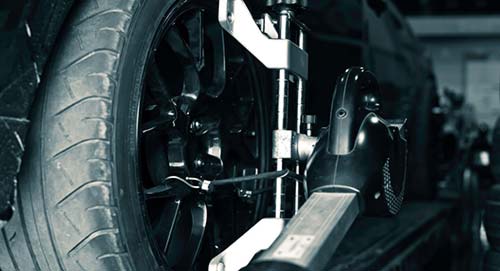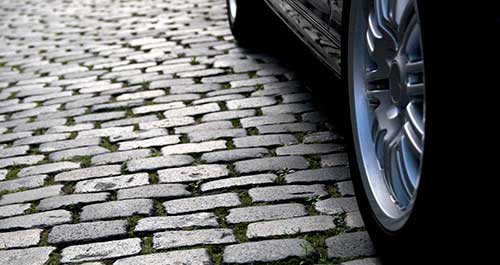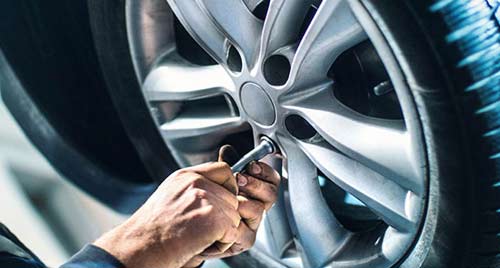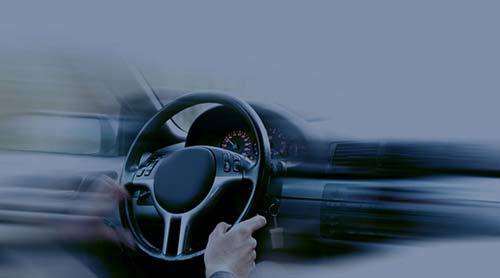Do you want the short answer or the long one? The short answer is some cars have a smoother ride with double wishbone suspension, but that’s not true for all cars. It depends on your make and model.
The long answer explains the reasons why the answer isn’t a clear yes or no. Want to discover more? Let’s start back with the basics: what’s wishbone suspension?
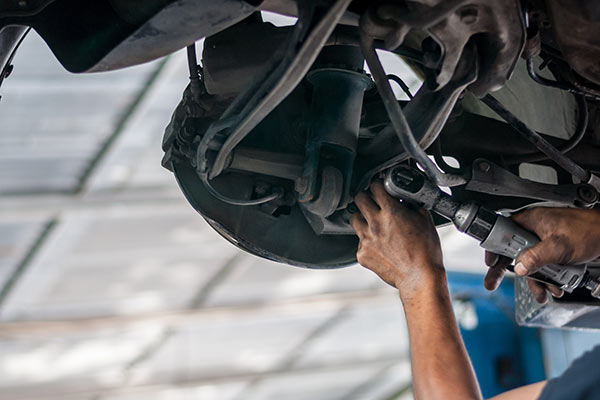
What’s wishbone suspension?
First of all, it’s important to clear up the confusion between wishbone and double wishbone suspension systems.
Other suspension systems, like the MacPherson strut suspension, feature a single control arm which is sometimes known as a wishbone. This means that, technically, these single control arm suspension systems can also be considered a wishbone system. However, most people refer to a double wishbone setup as a ‘wishbone’ system. To keep things clear, we’ll use the term ‘double wishbone’ here.
Since being first installed in cars over a century ago, double wishbone suspension has helped to improve driving comfort, even on the bumpiest roads. It’s an independent suspension system, meaning that the suspension on each wheel is separate, so bumps in the road primarily affect the contacted wheel.
How does double wishbone suspension work?

Double wishbone suspension allows each wheel to act and react independently from the others. It achieves this thanks to two wishbone-shaped arms (also known as control arms or double A-arms) that are located between the knuckle on the wheel assembly and the car’s chassis.
The upper and lower control arms have ball joints on both ends to allow movement in multiple directions. Vertical movement is controlled through the shock absorber and coil spring which are mounted on the wishbones.
By carefully adjusting the relationship between the upper and lower control arms’ lengths and relative angles, a technician can modify the car’s ride and handling. This includes controlling the wheel’s motions, via parameters like camber angle, caster angle, toe pattern, roll centre height, scrub radius and scuff.
Which types of cars use double wishbone suspension?
Double wishbone suspension systems are common on high performance cars and sporty sedans. Popular cars with double wishbone suspension systems include: Alfa Romeo Giulia 952, Lancia Delta S4, Mercedes-Benz (most models), Toyota Tundra, MG Rover TF, Honda Accord and Aston Martin DB7.
It’s also popular on open-wheel race cars, such as Formula 1 or Indianapolis, where the control arms are clearly visible as they extend from the body to the wheel assembly.
Use the MOOG Part Finder to discover the right suspension part for your type of car!
What are the advantages of double wishbone suspension?
Double wishbone suspension offers drivers a smoother driving experience, especially on bumpy roads as it doesn’t affect wheel alignment, unlike single wishbone systems, like a MacPherson strut suspension. And, as we’ve already seen, double wishbone suspension gives technicians flexibility to adjust parameters like camber, caster and toe to meet the requirements of the track or road.
Also, as there isn’t a shock absorber sticking out of the top of the wheel hub, this type of suspension requires less vertical space. This means you don’t need to raise the ride height, negatively affects handling by increasing the centre of gravity.
And, what are the disadvantages of double wishbone suspension?
There’s no denying that a double wishbone suspension is more complex – and therefore more expensive – to design, produce and maintain than other types of suspension, including the MacPherson strut suspension. If one of the many parts fails, the whole system needs to be serviced and repaired, which tends to take longer than other suspension systems.
Additionally, the high number of parts means a double wishbone suspension system is heavier and takes up more space (horizontally) than other suspension systems.
Lastly, the system is difficult to adapt to front-wheel-drive cars, so it is not appropriate for every make and model of car.
So, is double wishbone suspension best for my car?
To go back to our short answer, this depends on the make and model of your car. For some cars, the added comfort and performance of double wishbone suspension will offset the extra complication and expense of the installation and maintenance. However, for other cars, it either won’t be possible or won’t make enough of a difference for it to be worthwhile.
The content contained in this article is for entertainment and informational purposes only and should not be used in lieu of seeking professional advice from a certified technician or mechanic. We encourage you to consult with a certified technician or mechanic if you have specific questions or concerns relating to any of the topics covered herein. Under no circumstances will we be liable for any loss or damage caused by your reliance on any content.
RELATED ARTICLES
Discover the what, why and how of car alignment
Camber, caster and toe on an oval track
Common signs of suspension problems
Can you drive a car with broken suspension?
How long do wheel bearings last?
How a car steering system works: easy guide
Comparing steering principles: cars and bikes
